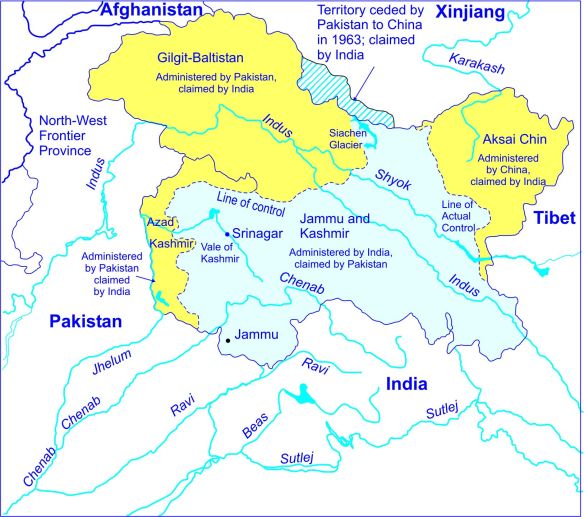India must assert its full rights under the Indus Waters Treaty to leverage the pact and halt Pakistan’s undeclared war against it through terrorist proxies.

In foreign policy, it is important for national leadership to choose its rhetoric carefully and back its words with at least modest action. Words not backed by any action can undermine a country’s credibility and perhaps even its deterrence.
When Prime Minister Narendra Modi raised the Balochistan issue in his Independence Day speech in 2016, he seemed to signal an important Indian policy shift. At least that is how his reference to Balochistan was widely interpreted. But since then, India has been totally silent on the issue, although Balochistan — Pakistan’s Achilles heel — threatens to become the new East Pakistan because of military killings and mass graves. India has even denied visas to some exiled Baloch activists.
Take another key issue: the Indus Waters Treaty (IWT). In 1960, in the naïve hope that water largesse would yield peace, India gifted the bulk of the Indus system’s waters — and the largest three of its six rivers — to Pakistan under the IWT. The Indus treaty remains a colossus on the world stage: It is by far the world’s most generous water pact, both in terms of the downstream country’s share of the waters (80.52%) and the aggregate volume of average yearly flows reserved for it (167.2 billion cubic metres). Still, an ungrateful Pakistan has waged covert or overt aggression almost continuously and is now using the IWT itself as a stick to beat India with, including by contriving water disputes and internationalizing them as part of a “water war” strategy.
Against this background, Modi raised the hope that India would finally revisit the IWT, by seizing on the Pakistan Senate’s unanimous March 2016 resolution calling for the treaty’s re-evaluation. Indeed, while chairing a September 2016 internal meeting on the IWT, Modi warned that, “Blood and water cannot flow together”. Setting in motion the treaty’s reappraisal, an inter-ministerial committee of secretaries was established, and officials said that India would now assert all its rights under the IWT, including fully utilizing its share of the allotted waters and expediting its long-delayed hydropower projects.
But two years later, India, alas, appears to have returned to the former state of affairs. The committee of secretaries, headed by the PM’s principal secretary, has fallen by the wayside. Apart from completing the small, 330-megawatt Kishenganga project after 11 years, India has shown little urgency on Indus Basin water projects. Even as Punjab and other states bitterly feud over water, India’s failure to adequately harness the resources of the three smaller rivers reserved for it results in Pakistan receiving substantial bonus waters. Just these extra outflows to Pakistan are many times greater yearly than the total volumes under the Israeli-Jordanian water arrangement.
India’s zigzag policy is most apparent from the recent meeting of the Permanent Indus Commission (PIC). The IWT calls for the PIC to meet at least once a year. The previous PIC meeting, like the one before it, was convened after almost 12 months — on March 29-30 this year. The next meeting was not due until 2019, yet India held a fresh PIC meeting just five months later.
The recent August 29-30 meeting, held in Lahore, marked the first bilateral engagement since the new military-backed Imran Khan government took office in Pakistan. With Pakistan’s international isolation deepening and its economy in dire straits, the military there is tactically seeking “peace” talks with India while still employing terrorists in a proxy war. Through such talks, it also hopes to legitimize the government it helped install through a manipulated election. But with India’s own elections approaching, talks with Pakistan will be politically risky for the ruling BJP.
The PIC discussions — and a prospective foreign ministers’ meeting in New York — illustrate how Modi’s government is seeking to engage Islamabad in other ways. In fact, India has given permission to Pakistan’s Indus commissioner and two other officials to shortly begin a tour of inspection of Indian projects in Jammu and Kashmir and elsewhere. In the past, such a tour has been used to collect new information so as to mount objections to Indian projects. In keeping with its broader strategy to foment discontent and violence in J&K, Pakistan seeks to deny J&K people the limited water benefits permissible under the IWT.
While the US has dumped international pacts at will (from the Anti-Ballistic Missile Treaty to the Kyoto and Paris accords), India still clings to the world’s most-lopsided water treaty, adhering to its finer details, even as Pakistan refuses to honour the terms of the central treaty governing bilateral relations — the 1972 Simla peace pact. Pakistan also flouts its commitment to prevent its territory from being used for cross-border terrorism. The Indus may be Pakistan’s jugular vein, yet a visionless and water-stressed India has let the IWT hang from its neck like the proverbial albatross. Make no mistake: Only by asserting its Indus leverage can India hope to end Pakistan’s unconventional war.
Brahma Chellaney is a geostrategist and author.
https://www.hindustantimes.com/analysis/only-by-asserting-its-indus-leverage-can-india-hope-to-end-pakistan-s-unconventional-war/story-BHA6ut5HVXBMJa7rYAs8kM.html
No comments:
Post a Comment